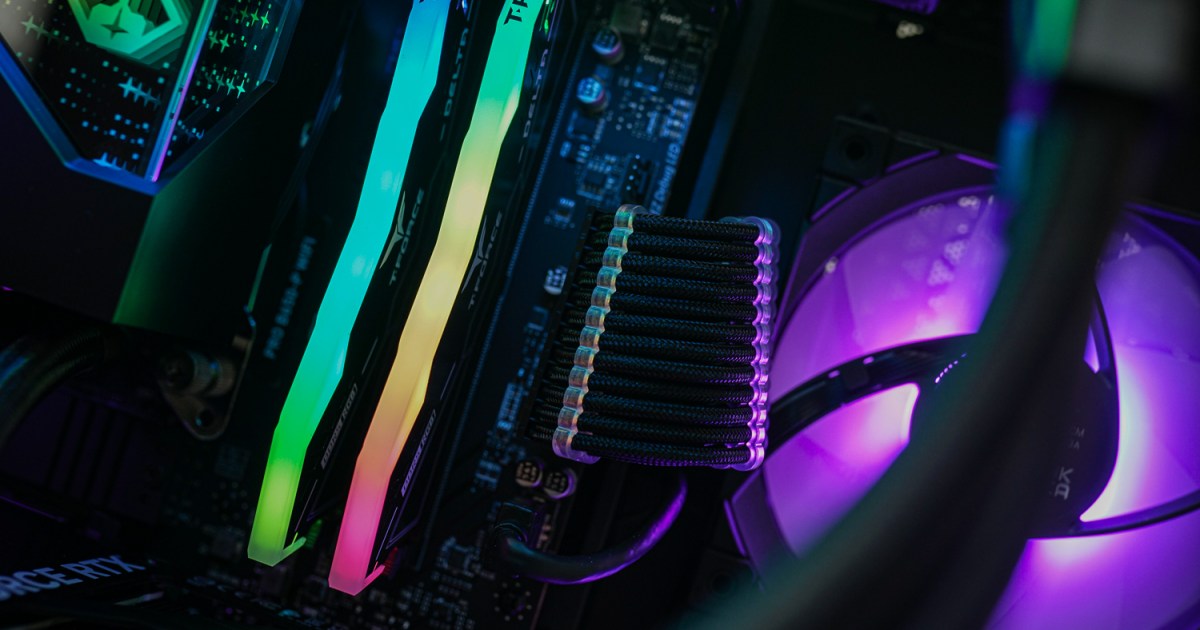The handheld PC gaming landscape has been revolutionized since Valve’s Steam Deck launch. The Steam Deck OLED further cemented its position, proving its staying power despite newer, more powerful competitors. But how does it fare against the Asus ROG Ally X? Both handhelds are iterative updates rather than full-fledged sequels, sharing more similarities than first apparent. This comparison delves into the strengths and weaknesses of each device to determine the ultimate victor.
Specs Comparison: A Clear Advantage?
| Feature | Steam Deck OLED | Asus ROG Ally X |
|---|---|---|
| APU | AMD custom APU (6nm, 4 cores/8 threads, up to 3.5GHz) | AMD Ryzen Z1 Extreme (4nm, 8 cores/16 threads, up to 5.1GHz) |
| Memory | 16GB LPDDR5-6400 | 24GB LPDDR5-7500 |
| Storage | Up to 1TB NVMe SSD | Up to 1TB M.2 2280 NVMe PCIe Gen 4 SSD |
| Display | 7.4-inch 1280 x 800 HDR OLED, 90Hz | 7-inch 1920 x 1080 IPS, 120Hz |
| Ports | 1x USB-C, 1x microSD slot, 1x 3.5mm audio | 1x USB-C (USB 3.2 Gen 2 & DP 1.4), 1x USB 4, 1x 3.5mm audio, 1x microSD slot |
| Battery | 50Wh | 80Wh |
| Dimensions (LxWxH) | 11.73 x 4.6 x 1.93 inches | 11.02 x 4.37 x 0.97 inches |
| Weight | 1.40 pounds (635 grams) | 1.49 pounds (675 grams) |
| Price | $550/$650 | $800 |
The ROG Ally X boasts a superior APU, the AMD Ryzen Z1 Extreme, built on a more advanced 4nm process with double the cores and threads compared to the Steam Deck’s custom APU. This, combined with faster and more abundant RAM (24GB vs. 16GB) and a more readily upgradeable SSD, gives the Ally X a significant hardware advantage. The inclusion of a USB 4 port with external GPU support further expands its potential.
 The Asus ROG Ally X console.
The Asus ROG Ally X console.
Price and Availability: A Balancing Act
Both handhelds offer improved features over their predecessors. The Steam Deck OLED, released in November 2023, maintains competitive pricing at $550 for 512GB and $650 for 1TB, with widespread availability. The ROG Ally X, launched in July 2024, commands a higher price of $800 for 1TB.
Design and Battery: Visuals vs. Longevity
The ROG Ally X now sports a black chassis, redesigned joysticks, an improved D-pad, and strategically relocated macro buttons. The Steam Deck OLED’s standout feature is its vibrant OLED screen, offering superior visuals compared to the Ally X’s IPS display, despite being slightly smaller. The Ally X counters with a higher 120Hz refresh rate. Weight differences are negligible.
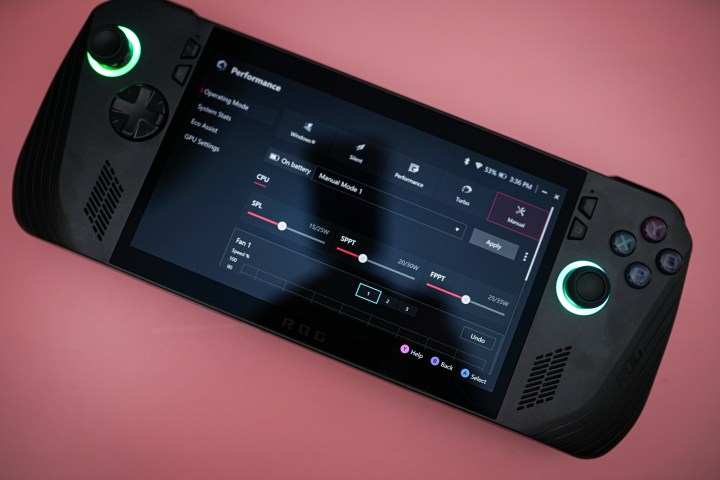 The Asus ROG Ally X console.
The Asus ROG Ally X console.
A key upgrade for the Ally X is its doubled battery capacity (80Wh), significantly extending playtime. While the Steam Deck OLED’s battery improvement is less dramatic, the more efficient APU results in noticeable battery life gains. The Ally X’s impressive battery performance allows for extended gaming sessions without needing a recharge.
 The Steam Deck OLED on a pink background.
The Steam Deck OLED on a pink background.
 The Asus ROG Ally X as seen from the back.
The Asus ROG Ally X as seen from the back.
Performance: Power vs. Optimization
The ROG Ally X’s additional RAM significantly impacts performance in certain games. At 720p (Steam Deck’s native resolution), the performance difference is less pronounced than expected, with noticeable improvements in memory-intensive titles. At 1080p, the Ally X excels, showcasing the impact of increased RAM. Adjusted power modes further enhance performance.
 The Steam Deck and Steam Deck OLED sitting next to each other.
The Steam Deck and Steam Deck OLED sitting next to each other.
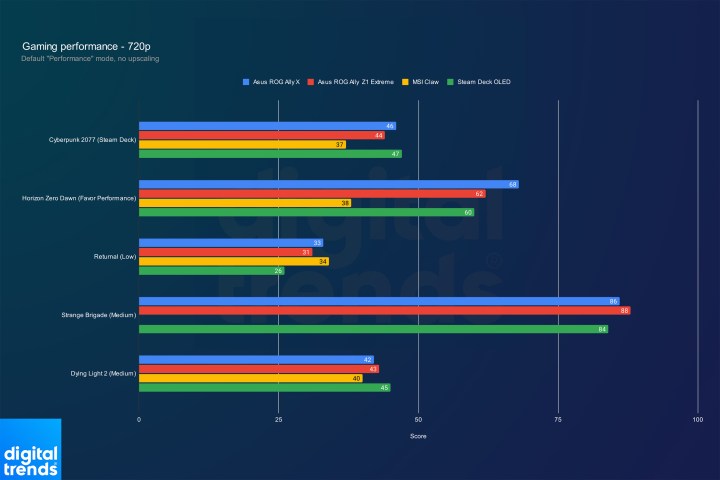 Performance of the Asus ROG Ally X at 720p.
Performance of the Asus ROG Ally X at 720p.
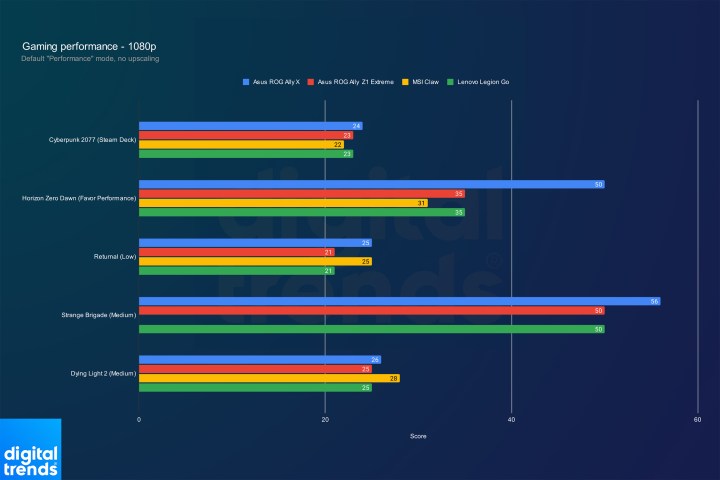 Asus ROG Ally X performance at 1080p.
Asus ROG Ally X performance at 1080p.
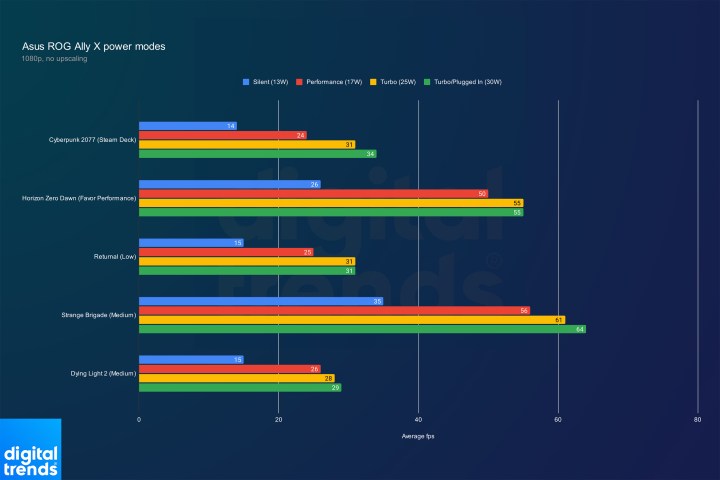 Performance for the different power modes of the Asus ROG Ally X.
Performance for the different power modes of the Asus ROG Ally X.
The Steam Deck OLED also sees performance gains, albeit smaller, due to its optimized APU. While these improvements are minor, they contribute to a smoother gaming experience.
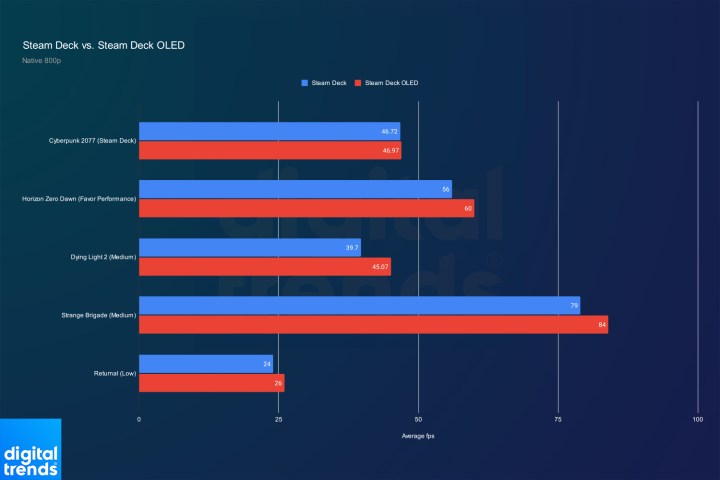 A chart compares Steam Deck LCD and OLED benchmarks.
A chart compares Steam Deck LCD and OLED benchmarks.
The Verdict: A Matter of Priorities
 Armoury Crate SE on the Asus ROG Ally X.
Armoury Crate SE on the Asus ROG Ally X.
Choosing between the ROG Ally X and Steam Deck OLED hinges on individual priorities. The Ally X offers superior performance and battery life but at a premium price. The Steam Deck OLED provides a compelling visual experience and a user-friendly interface at a lower cost. The decision ultimately depends on your budget and whether raw power or optimized performance and affordability are more important.







